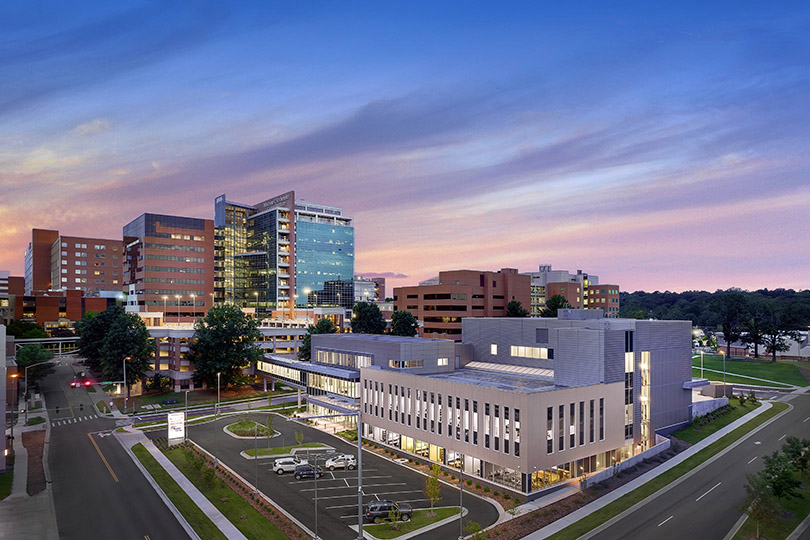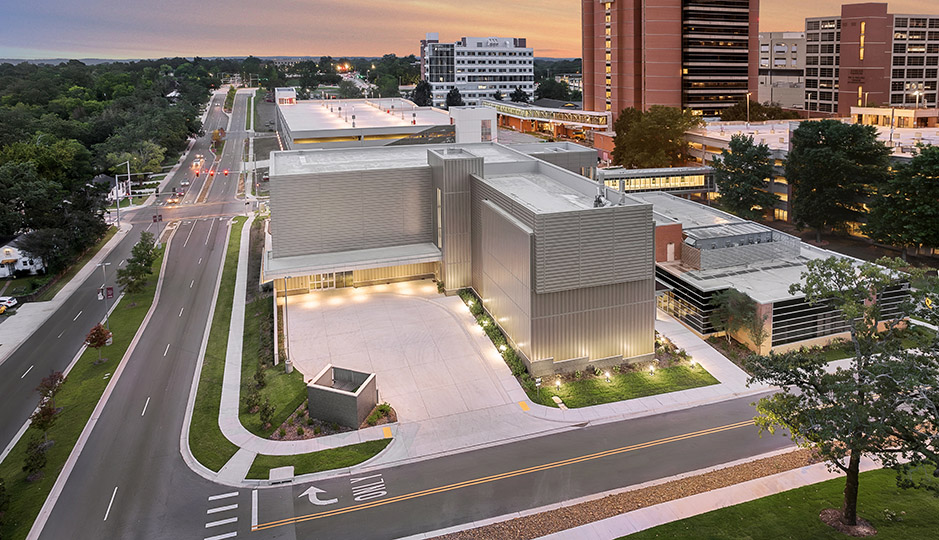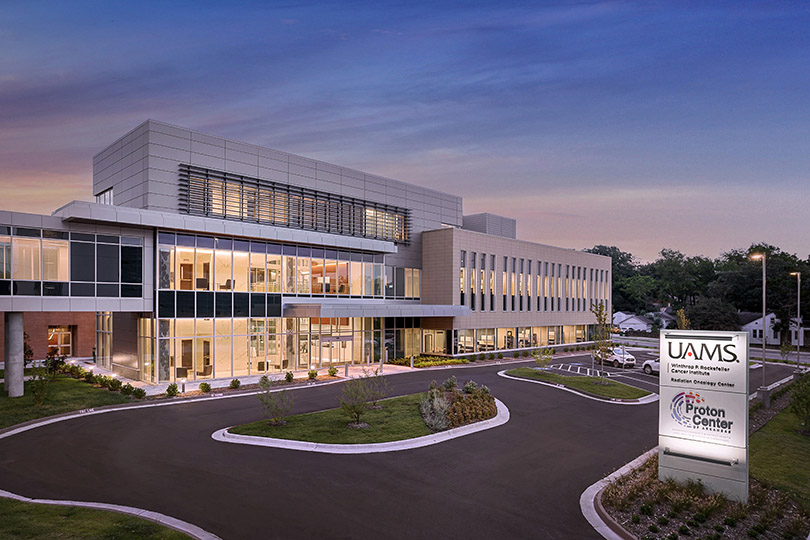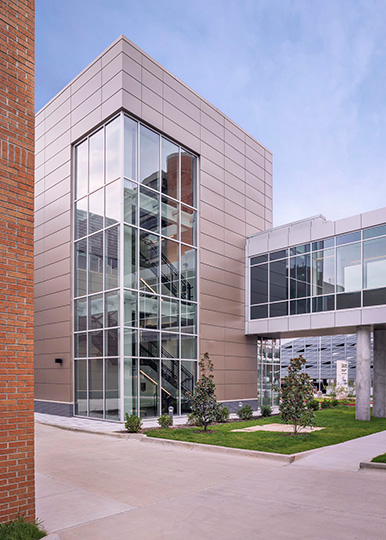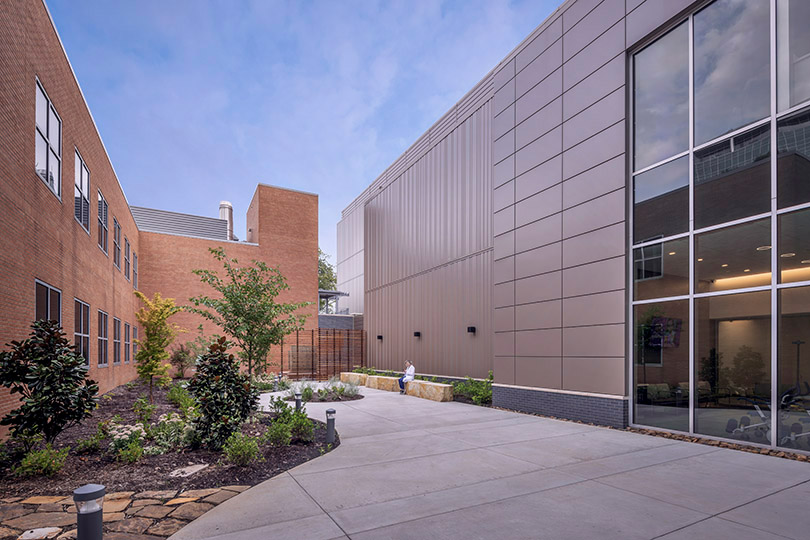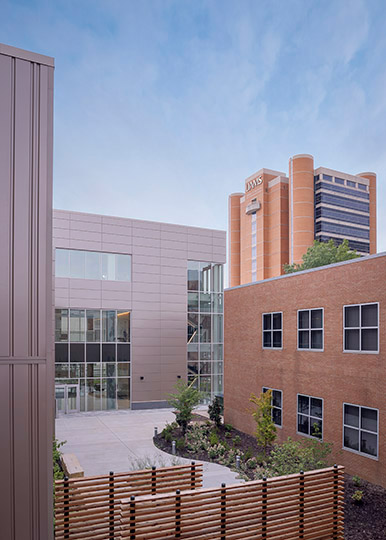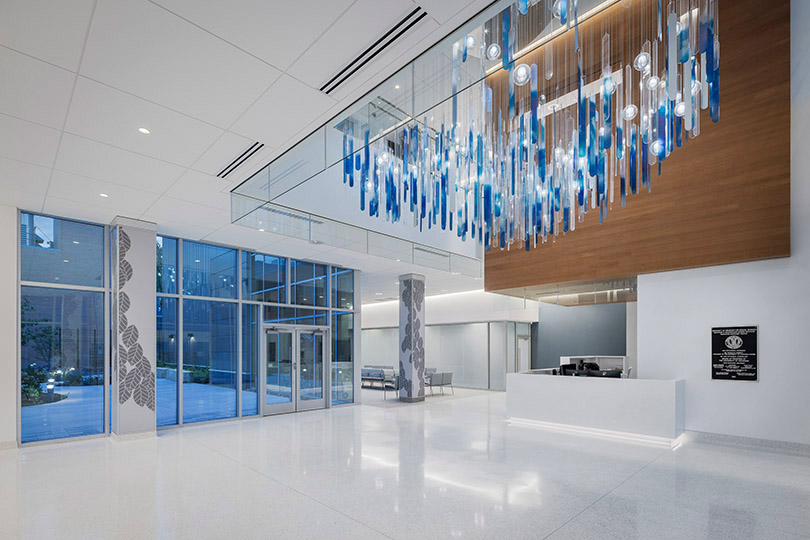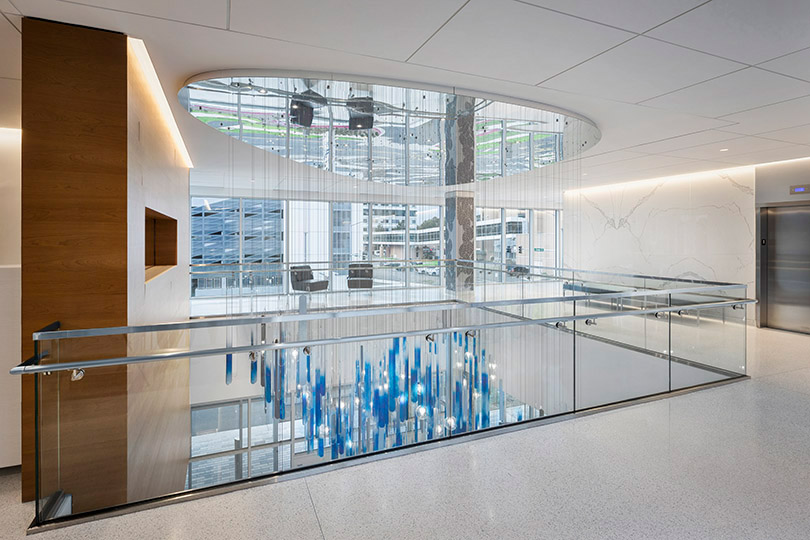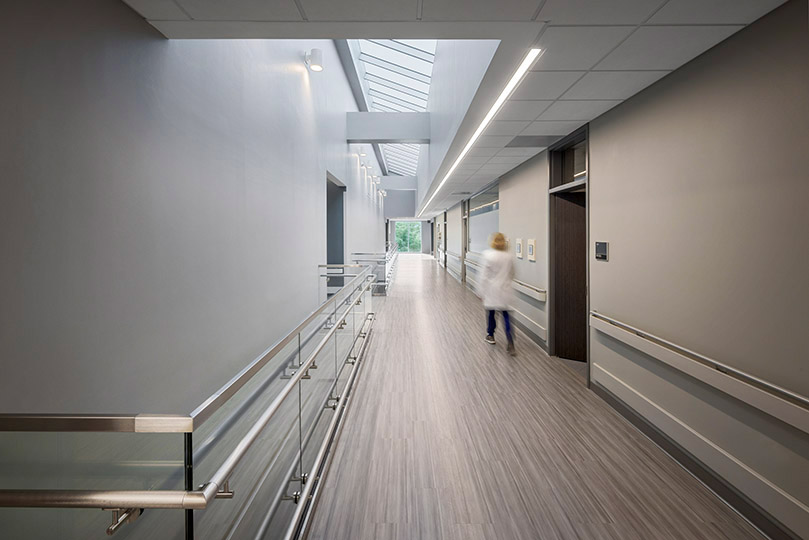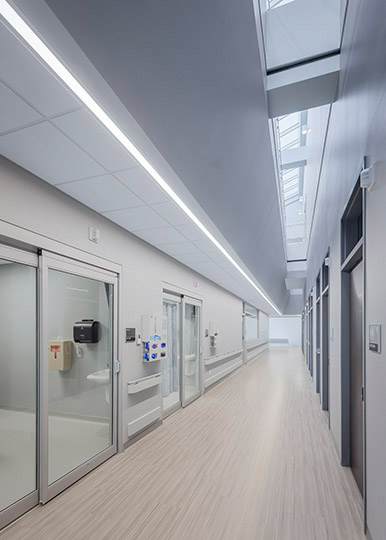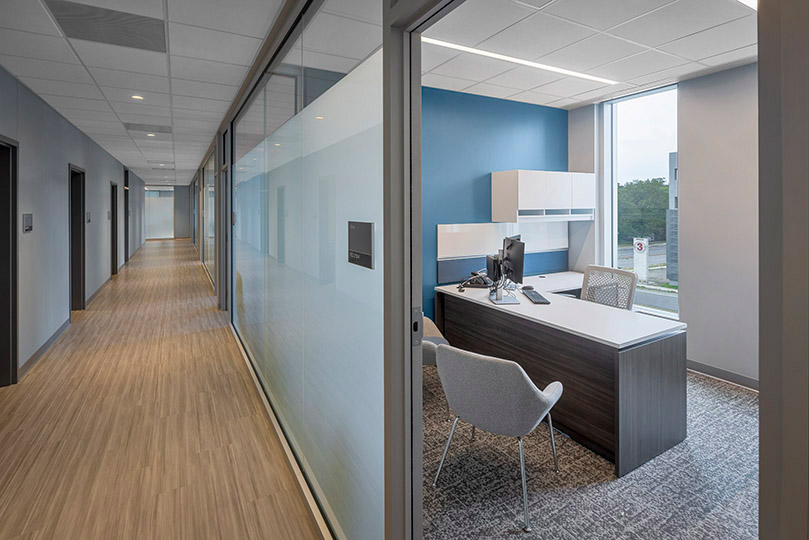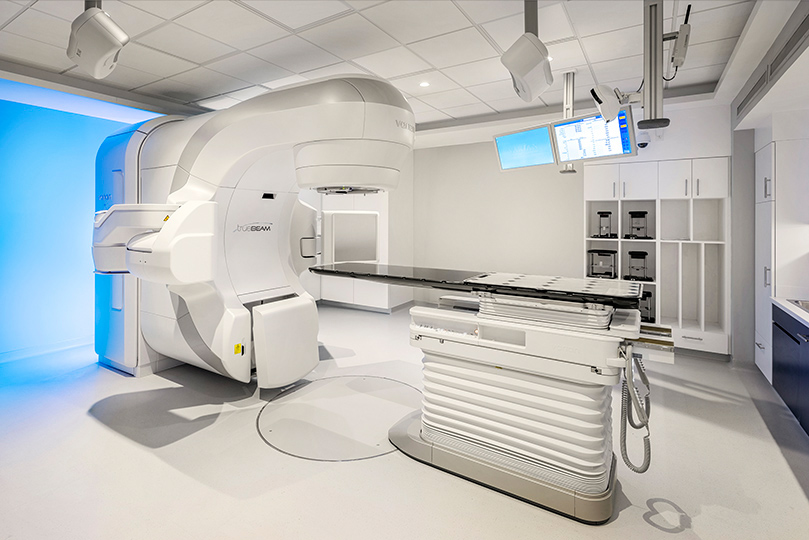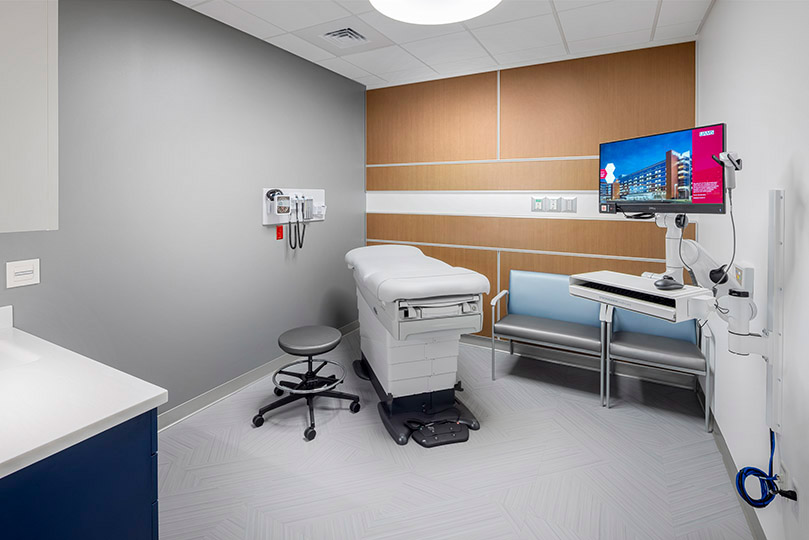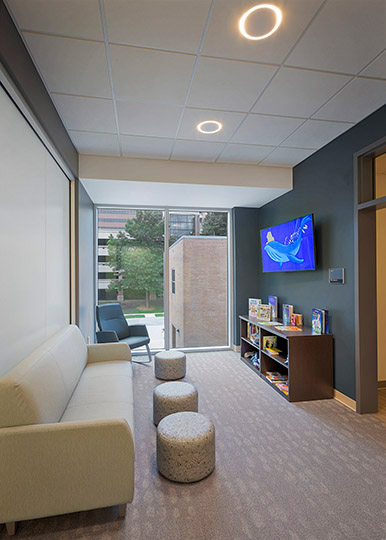University of Arkansas for Medical Sciences
Radiation Oncology and Proton Therapy Center, Little Rock, AR
The Radiation Oncology Center (ROC) for the University of Arkansas for Medical Sciences (UAMS) will enhance existing synergies between UAMS' clinical care, research, and medical education departments to deliver a vision for world class personalized cancer care, wellness and prevention, and including the first proton therapy treatment facility in the State of Arkansas.
Occupying a prominent location at the eastern entrance to the UAMS campus, a new 52,000 sf replacement facility will provide expanded photon, HDR, and proton therapy treatment capabilities with advanced imaging. The Level One program will house four new linear accelerators; Level Two will house a IBA Proteus One proton therapy vault, HDR Brachytherapy suite, along with clinical support; and each Level will have a dedicated CT for imaging and simulations.
Tsoi Kobus developed a signature design while managing UAMS's budget and ambitious schedule, including an early Bid Package for sitework, foundations, and six concrete vaults. The design approach takes advantage of steeply sloping site with a unique solution that "nests" the large concrete bunkers and capitalizes on shared shielding walls to reduce costs. Tsoi Kobus has also recommended the selective use of high-density concrete to reduce vault footprint and volume, creating more space for other critical functions with no net increase to the overall area.
Links
-
UAMS Opens New Radiation Oncology Center
UAMS -
UAMS celebrates opening of Radiation Oncology Center
Arkansas Online -
UAMS Radiation Oncology Center opens
KUAR -
UAMS opens new Radiation Oncology center to provide advanced cancer treatment
KATV -
Cyclotron for Arkansas’ first proton center arrives at UAMS
Magnolia Reporter -
Proton Cyclotron arrives at UAMS
KLRT 16 - UAMS Breaks Ground on New Radiation Oncology Center, Will House First Proton Center in Arkansas
- UAMS getting started on proton center

